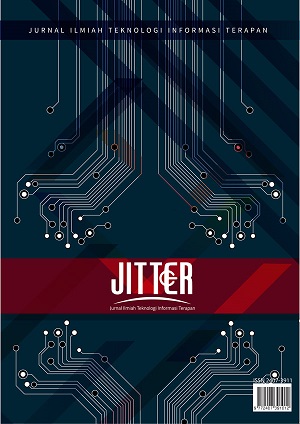ANALISIS PENERAPAN LEAN WAREHOUSE UNTUK MEMINIMALISIR WASTE MENGGUNAKAN VALUE STREAM MAPPING DAN FISHBONE DIAGRAM
DOI:
https://doi.org/10.33197/jitter.vol9.iss2.2023.1003Keywords:
Lean Warehouse, Waste, Value Stream MappingAbstract
Value Added Service (VAS) division at PT Pos
Logistik Indonesia often cannot reach the set
production target. Preliminary identification shows
the factors causing delay, namely waiting for the
arrival of supporting materials. The Lean Warehouse
method based on the Lean Manufacturing concept is
used to solve this problem. The purpose of this study
is to find the root of the type of waste and get the right
solution to reduce the waiting time for stickering and
labeling of Bedtime Lotion 100 ml products. The
results showed the order of percentage of waste is
defect waste of 22.40%, overproduction waste of
16.76%, motions waste of 16.32%, inventory waste of
14.47%, transportation waste of 10.70%, process
waste of 10.59% and waiting waste is 8.77%. There
are improvements in the Non Value Added (NVA)
activity which originally amounted to 430 seconds to
395 seconds, while the Value Added (VA) activity
which originally amounted to 700 seconds became
632.8 seconds after repairs or a decrease in time of
0.35% on activities Non Value Added (NVA), whereas
in Value Added decreased by 0.672%.
Downloads
Downloads
Published
How to Cite
Issue
Section
License
Copyright (c) 2023 Salsabila Nurulita, Cahaya Ramadhanti, Intan Pramestiana

This work is licensed under a Creative Commons Attribution-NonCommercial-ShareAlike 4.0 International License.
Submission of a manuscript implies that the submitted work has not been published before (except as part of a thesis or report, or abstract); that it is not under consideration for publication elsewhere; that its publication has been approved by all co-authors. If and when the manuscript is accepted for publication, the author(s) still hold the copyright and retain publishing rights without restrictions. Authors or others are allowed to multiply the article as long as not for commercial purposes. For the new invention, authors are suggested to manage its patent before published. The license type is CC-BY-SA 4.0.




.png)
.png)













.png)


